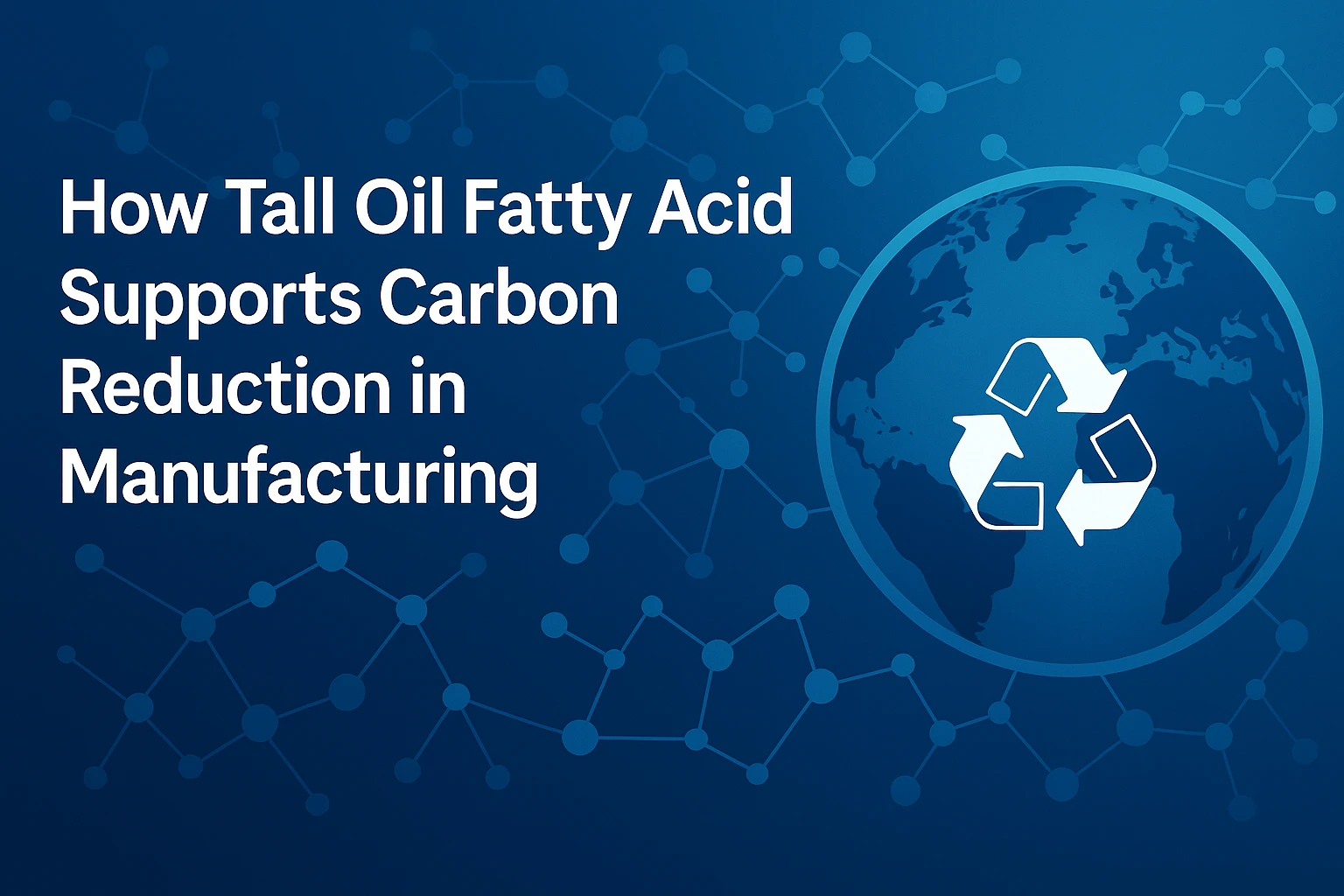How Tall Oil Fatty Acid Supports Carbon Reduction in Manufacturing

Table of Content
-
Introduction: Why Carbon Reduction Matters in Modern Industry
-
What Makes Tall Oil Fatty Acid a Sustainable Solution?
-
TOFA in Practice: Emission Reduction and Green Supply Chains
-
Feedstock, Sourcing, and the Circular Economy Advantage
-
Conclusion: Leading Industrial Carbon Reduction with TOFA
1. Introduction: Why Carbon Reduction Matters in Modern Industry
As manufacturers face mounting pressure to cut greenhouse gas emissions and reach net-zero targets, the search for bio-based, low-carbon feedstocks is urgent. Chemicals like tall oil fatty acid (TOFA) are in the spotlight for their ability to replace fossil-derived raw materials in coatings, lubricants, adhesives, surfactants, biodiesel, and more. Across the value chain, companies are leveraging TOFA to help meet regulatory and market-driven decarbonization goals for 2025 and beyond.
2. What Makes Tall Oil Fatty Acid a Sustainable Solution?
TOFA is derived from crude tall oil, a byproduct of wood pulping that would otherwise go to waste or carry limited value. Its carbon footprint is significantly lower than petroleum-based alternatives, offering a 40–60% reduction in lifecycle emissions depending on application and supply route. The bio-origin, rapid renewability of feedstock, and minimal land-use impact make TOFA a standout in green chemistry. Unlike most vegetable oils, TOFA avoids competition with food supplies and supports a circular economy, converting forestry side streams into high-value materials.
3. TOFA in Practice: Emission Reduction and Green Supply Chains
Integration of TOFA into manufacturing yields several emission-saving advantages:
-
Replacement of high-carbon fossil oils in resins, lubricants, and plasticizers directly reduces embedded CO2 in end products.
-
Life cycle assessment studies confirm notable reductions in both direct and upstream (Scope 1 and 3) emissions for adopters.
-
In the fuel sector, co-processing tall oil fatty acid with conventional refining streams enables the efficient production of bio-based, lower-carbon transportation fuels using existing refinery assets. This further drives down industry-wide emissions while maintaining high-performance product specifications.
4. Feedstock, Sourcing, and the Circular Economy Advantage
TOFA’s rise highlights how byproducts and waste streams can become new revenue opportunities and sustainability enablers. Sourcing from integrated paper-chemical operations ensures consistent quality and traceability. Leading suppliers invest in certification, R&D, and transparent lifecycle analysis to maintain carbon benefits and future resilience. As demand grows for RSPO, FSC, and ISCC Plus-certified raw materials, TOFA’s intrinsic bio-circularity strengthens supply chains and company ESG profiles.
5. Conclusion: Leading Industrial Carbon Reduction with TOFA
In 2025, tall oil fatty acid is more than a renewable ingredient; it is a strategic tool for manufacturers seeking rapid, scalable carbon reductions. By adopting TOFA, companies accelerate their journey to net zero, close loops in the industrial bioeconomy, and deliver credible sustainability progress to regulators and consumers alike.

Leave a Comment